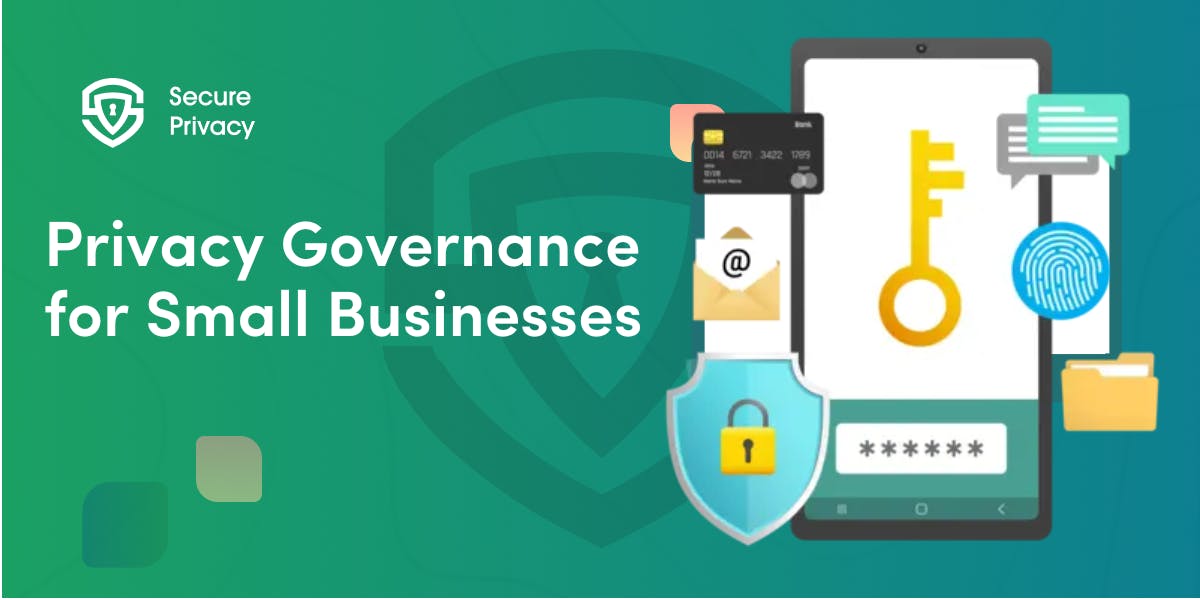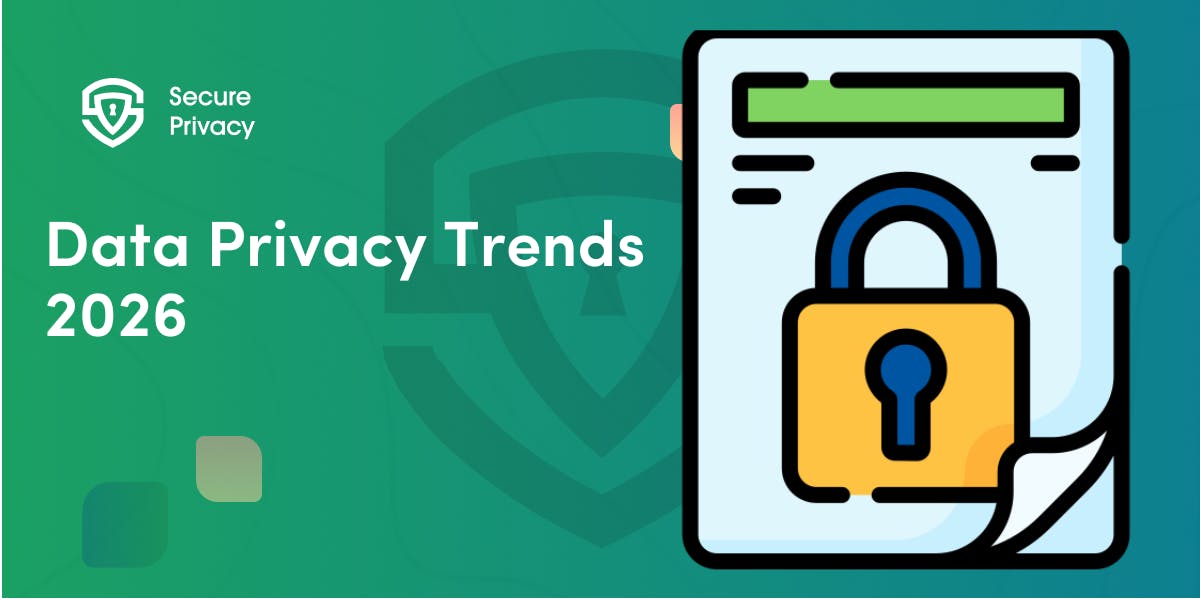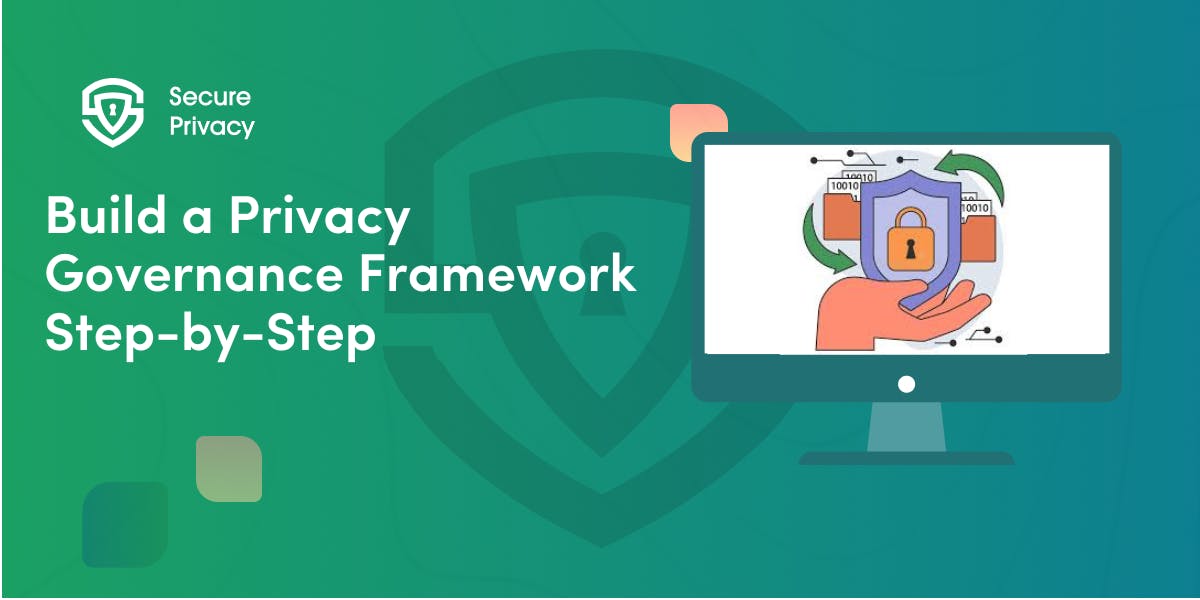How Regulatory Sandboxes Transform Consent Management: Your Complete Compliance Guide
Privacy compliance has become a maze of conflicting requirements, evolving regulations, and user expectations that change faster than most organizations can adapt. You're not alone if you've struggled to balance GDPR's strict consent requirements with user-friendly interfaces, or if you've wondered how to test innovative privacy features without risking regulatory penalties.
Regulatory sandboxes offer a solution that's reshaping how consent management platforms develop and deploy privacy-first technologies. These controlled testing environments let you experiment with cutting-edge consent mechanisms while maintaining regulatory oversight — turning compliance from a roadblock into a competitive advantage.
Understanding the Regulatory Sandbox Framework for Consent Management
What Makes a Consent Management Sandbox Work
Regulatory sandboxes create controlled environments where you can test consent management innovations under relaxed regulatory conditions. Think of them as laboratory settings where privacy authorities temporarily waive certain compliance requirements, allowing you to experiment with novel approaches to user consent.
The Financial Services Commission of Mauritius established six foundational criteria that guide most sandbox programs: innovation scope, consumer benefit, technical readiness, risk management, post-testing deployment strategy, and resource adequacy. For consent management platforms, this translates to opportunities for testing revolutionary consent interfaces, AI-driven preference prediction models, and cross-device synchronization protocols under direct regulator supervision.
The Norwegian Data Protection Authority's AI-focused sandbox demonstrates how specialized these environments have become. Their program requires participants to implement "SALT" solutions—combining biometric verification with quantum-resistant encryption—enabling consent management platforms to trial features like neuroadaptive consent confirmation using EEG signals or federated learning architectures for cross-platform preference synchronization.
Core Compliance Testing Objectives
Sandbox participation requires alignment with three fundamental compliance pillars that determine success:
Legal Articulation Accuracy forms the foundation, ensuring your consent language meets GDPR Article 7's requirements for consent that's "freely given, specific, informed, and unambiguous." This means every word in your consent requests undergoes scrutiny for clarity and legal precision.
Technical Safeguards Validation covers your platform's security infrastructure, testing encryption standards like CRYSTALS-Kyber for post-quantum security and audit trail integrity mechanisms. You'll need to prove your systems can protect consent data even against future computing threats.
User Experience Compliance verifies that your interfaces meet WCAG 2.2 accessibility standards and age-appropriate design codes. This ensures your consent mechanisms work for all users, including children and individuals with disabilities.
The UK ICO's sandbox engagement with Seers exemplifies this comprehensive approach. Their Child Privacy CMP underwent rigorous testing of age-verification workflows and parental consent delegation features under the Children's Code, demonstrating how sandboxes evaluate real-world compliance scenarios.
Technical Implementation: What You Can Test in Sandboxes
Advanced Consent Management Features
Modern sandboxes facilitate testing of three critical components that represent the future of consent management:
Contextual Consent Engines use machine learning models to adjust consent frequency based on content sensitivity. For example, health data pages might trigger heightened confirmation requirements, while standard marketing content uses streamlined consent flows. You can test these intelligent systems without worrying about algorithmic transparency requirements during the sandbox phase.
Cross-Jurisdictional Rule Arbitration addresses one of privacy's biggest challenges—managing consent across multiple legal frameworks. These automated systems prioritize the strictest applicable regulations when detecting users from multiple jurisdictions, ensuring comprehensive compliance without manual intervention.
Consent Provenance Chains create blockchain-anchored audit trails that meet GDPR Article 30 record-keeping requirements while maintaining user pseudonymity. These systems provide immutable proof of consent validity, crucial for regulatory audits and user trust.
Google's Privacy Sandbox initiative, despite facing antitrust scrutiny, demonstrates technical possibilities through features like the Topics API—a k-anonymity framework replacing third-party cookies with cohort-based advertising consent. While not a regulatory sandbox per se, its development process informed EU sandbox requirements for explainable AI in consent preference modeling.
Risk-Controlled Deployment Strategies
Sandbox guidelines mandate graduated rollout protocols that minimize risk while maximizing learning opportunities:
Phase 1 involves internal testing with synthetic user data and automated compliance checks. You'll run your consent mechanisms through simulated scenarios, identifying potential issues before real users encounter them.
Phase 2 introduces limited live trials with fewer than 1,000 real users and real-time regulatory dashboards. Regulators monitor your system's performance while you gather authentic user interaction data.
Phase 3 enables full deployment with active monitoring and kill-switch mechanisms for non-compliant data flows. This safety net ensures you can halt problematic processes immediately if compliance issues arise.
The FCA's Regulatory Sandbox requires consent management platform developers to implement "circuit breaker" protocols that halt data processing if consent validity scores drop below predefined thresholds. This aligns with Mauritius' requirements for client compensation frameworks during testing failures, ensuring user protection remains paramount.
Compliance Assessment: How Sandboxes Evaluate Your Platform
Multi-Dimensional Scoring Systems
Sandbox evaluations employ weighted scoring across four critical domains that determine your platform's readiness for full deployment:
Legal Precision carries the most weight at 35% and focuses on regulatory citation accuracy to ensure consent language compliance. Technical Security accounts for 30% and evaluates encryption protocol compliance and data protection mechanisms. User Comprehension represents 25% of the assessment and measures interface clarity and understanding through metrics like post-consent quiz success rates. System Resilience makes up the remaining 10% and examines platform stability and reliability by tracking mean time between consent failures.
The ICO's evaluation of Seers' consent management platform exemplified this comprehensive approach, using eye-tracking studies to measure attention duration on cookie purpose descriptions and achieving 72% gaze retention on critical disclosures. This detailed analysis helps regulators understand whether users actually comprehend what they're consenting to, rather than simply measuring whether they click "accept."
Automated Compliance Verification
Next-generation sandboxes integrate AI validation tools that revolutionize compliance checking:
Natural Language Processing verifies policy language against regulator-approved templates, ensuring your consent requests meet legal standards across multiple jurisdictions simultaneously.
Consent Flow Analysis detects dark patterns through UI element positioning and color contrast checks, identifying subtle design choices that might unfairly influence user decisions.
Cryptographic Proof Generation creates zero-knowledge evidence of data minimization compliance, mathematically proving your platform processes only necessary data without revealing specific user information.
Norway's sandbox utilizes differential privacy auditors that mathematically prove the absence of individual identifiability in consent preference datasets, setting new standards for privacy-preserving analytics.
Cross-Border Challenges: Managing Global Compliance
Regulatory Arbitrage Risks
Participating in multiple sandboxes simultaneously creates complex compliance obligations that you must navigate carefully. The FCA reports that 43% of cross-border sandbox participants struggle with conflicting requirements across different frameworks.
Consent Withdrawal Timing presents a major challenge—GDPR mandates immediate effect while CCPA allows a 45-day processing window. Your platform must accommodate both requirements when serving users across jurisdictions.
Age Thresholds vary significantly—COPPA sets a 13-year-old default while GDPR requires 16 years for independent consent. Building flexible age verification systems becomes crucial for global platforms.
Data Localization requirements conflict between frameworks—EU adequacy decisions clash with China's Cybersecurity Law storage mandates, forcing architectural decisions that affect your entire consent management infrastructure.
Cultural Adaptation Requirements
Sandbox testing must account for regional consent psychology that varies dramatically across markets:
European users prefer granular, periodic reconfirmation, with 67% opt-in rates when platforms use progressive disclosure methods. Your European consent flows should emphasize transparency and user control.
Asian markets show higher acceptance of implied consent models, with 82% retention rates when using passive authentication methods. This regional preference allows for streamlined consent experiences without sacrificing compliance.
North American users demand plain-language summaries with Flesch-Kincaid Grade 6 readability targets. Your consent language must balance legal precision with everyday comprehension.
The Privacy Sandbox's failed FLoC trials demonstrated cultural misalignment consequences—89% of EU users rejected cohort-based advertising compared to 61% in the US, highlighting the importance of regional adaptation.
Future-Proofing Your Consent Management Strategy
AI-Driven Compliance Forecasting
Emerging sandbox features position your platform for tomorrow's regulatory landscape:
Regulatory Change Prediction uses transformer models analyzing over 200 global legislation drafts to simulate future compliance requirements. Your platform can adapt to regulatory changes before they take effect.
Automated Rule Translation converts legal text into machine-executable consent logic with 93% accuracy in early trials. This capability eliminates manual policy updates and reduces compliance lag time.
Ethical AI Audits provide third-party assessments of consent algorithm fairness using SHAP values and counterfactual testing. These audits ensure your AI-driven consent systems treat all users equitably.
Quantum-Secure Consent Systems
Post-sandbox consent management platforms are adopting advanced cryptographic approaches:
Lattice-Based Homomorphic Encryption enables consent analytics on encrypted preference data, allowing insights without compromising privacy.
Isogeny-Backed Signature Chains protect audit trails against quantum computing threats, ensuring long-term consent record integrity.
Multi-Party Computation Oracles enable distributed consent verification without centralized data aggregation, reducing single points of failure and privacy risks.
Real-World Success: The Seers Case Study
The Seers regulatory sandbox participation demonstrates how controlled testing environments produce measurable compliance improvements. Their child-focused consent system reduced "accept all" rates by 38% while maintaining full GDPR compliance—proving that better privacy protection can coexist with improved user experience.
Seers achieved this success through systematic sandbox testing that refined their age-verification workflows, parental consent delegation features, and interface design elements. The ICO's rigorous evaluation process, including eye-tracking studies and comprehension assessments, provided data-driven insights that traditional compliance approaches couldn't deliver.
This case study illustrates how regulatory sandboxes transform compliance from reactive compliance checking to proactive privacy enhancement. Organizations that embrace sandbox opportunities position themselves as privacy leaders while building competitive advantages through superior consent management capabilities.
Taking Action: Your Next Steps
Regulatory sandbox testing has become essential for developing consent management platforms that satisfy evolving global privacy standards while maintaining usability. The controlled environment approach reconciles conflicting requirements while providing clear pathways to compliance success.
Future sandboxes will likely incorporate virtual reality environments for testing consent interfaces in metaverse contexts and AI judges that simulate multi-jurisdictional rulings. As privacy regulations continue expanding into artificial intelligence oversight, these controlled environments will remain vital crucibles for privacy-preserving innovation.
Through continued public-private collaboration, regulatory sandboxes ensure consent management platforms adapt to both technological possibilities and societal expectations of digital autonomy. Organizations that participate in these programs today will lead tomorrow's privacy-first digital economy.
Frequently Asked Questions
Q: How long does regulatory sandbox participation typically last?
A: Most regulatory sandboxes operate on 12-24 month cycles, with extensions available for complex projects. The UK ICO's sandbox offers 12-month initial periods with possible 6-month extensions, while the Norwegian Data Protection Authority provides up to 18 months for AI-focused projects. Your specific timeline depends on project complexity and regulatory requirements.
Q: What are the costs associated with joining a regulatory sandbox?
A: Sandbox participation costs vary significantly by jurisdiction and program scope. Many regulatory sandboxes, including the UK ICO's program, offer free participation for qualifying organizations. However, you'll need to budget for internal development resources, compliance documentation, and potential third-party auditing requirements. Expect to allocate 20-40% of your development budget to sandbox-specific compliance activities.
Q: Can small startups participate in regulatory sandboxes, or are they only for large enterprises?
A: Regulatory sandboxes actively encourage startup participation and often prioritize innovative smaller organizations. The UK ICO specifically seeks diverse participants, including early-stage companies with novel privacy solutions. Many sandbox programs provide additional support for startups, including regulatory guidance sessions and technical assistance. Your innovation potential matters more than company size.
Q: What happens if my consent management platform fails sandbox testing?
A: Sandbox failures don't result in regulatory penalties—that's the entire point of controlled testing environments. If your platform doesn't meet requirements, regulators provide detailed feedback and often allow resubmission after addressing identified issues. The Norwegian Data Protection Authority reports that 67% of initially unsuccessful participants eventually achieve compliance through iterative improvements.
Q: How do I choose between different regulatory sandboxes if my platform serves multiple markets?
A: Consider your primary market focus, regulatory complexity, and resource availability. If you serve EU users primarily, start with the UK ICO or Norwegian Data Protection Authority sandboxes. For global platforms, consider programs that emphasize cross-jurisdictional compliance testing. Many organizations participate in multiple sandboxes sequentially, using learnings from one program to strengthen applications to others.
Q: Are there specific technical requirements my platform must meet before applying to a sandbox?
A: Technical readiness requirements vary by program but generally include basic security measures, documented privacy-by-design principles, and preliminary compliance frameworks. The Mauritius sandbox requires demonstrated technical feasibility and risk management protocols. Most programs accept platforms in development stages, provided you can demonstrate clear implementation pathways and resource commitments.
Q: How do regulatory sandboxes handle cross-border data transfers during testing?
A: Sandboxes typically operate under existing international data transfer mechanisms while providing additional flexibility for testing purposes. EU-based sandboxes often utilize adequacy decisions or Standard Contractual Clauses, with temporary exemptions for specific testing scenarios. You'll need to document data flow architectures and demonstrate compliance with applicable transfer requirements before beginning sandbox participation.
Get Started For Free with the
#1 Cookie Consent Platform.
No credit card required

Privacy Governance for Small Businesses: Step-by-Step Guide
You're a 20-person company. A customer asks for their data. Your marketing team just added a new tracking pixel. Your CRM vendor updated their terms. And you just realized you might need to comply with GDPR, CCPA, or both.
- Legal & News
- Data Protection

Data Privacy Trends 2026: What Every Business Needs to Know
You're planning next year's compliance roadmap, but the rules keep changing. New regulations emerge monthly. Enforcement penalties double overnight. And now, AI governance lands on your desk alongside data privacy obligations.
- Legal & News
- Data Protection

How to Build a Privacy Governance Framework: Step-by-Step Guide
Privacy governance isn't about checking regulatory boxes — it's about building systematic capability to manage personal data responsibly across your entire organization. Whether you're facing GDPR obligations, preparing for CCPA enforcement, or establishing foundational privacy practices, a structured framework transforms compliance from reactive firefighting into proactive risk management.
- Legal & News
- Data Protection

